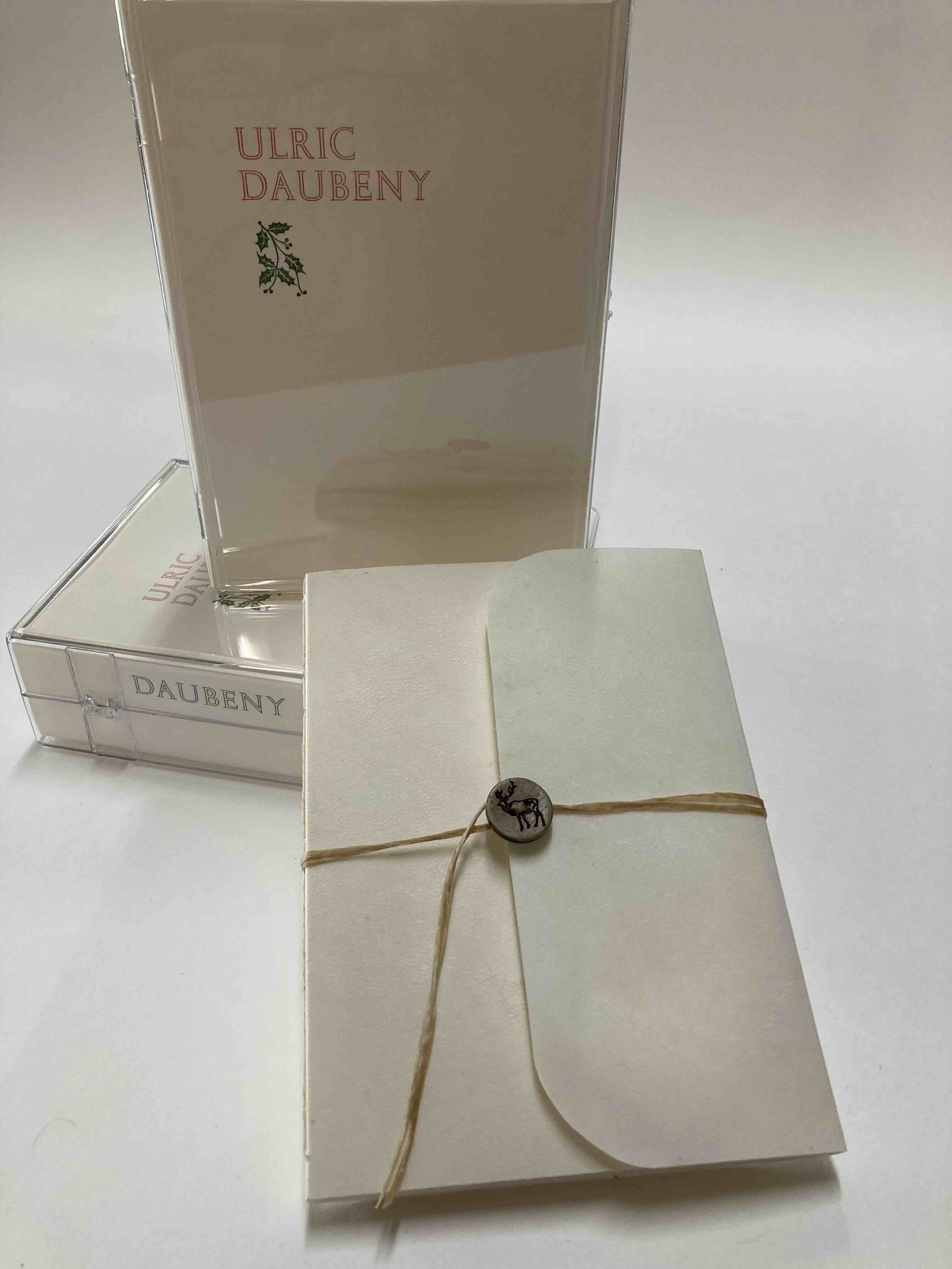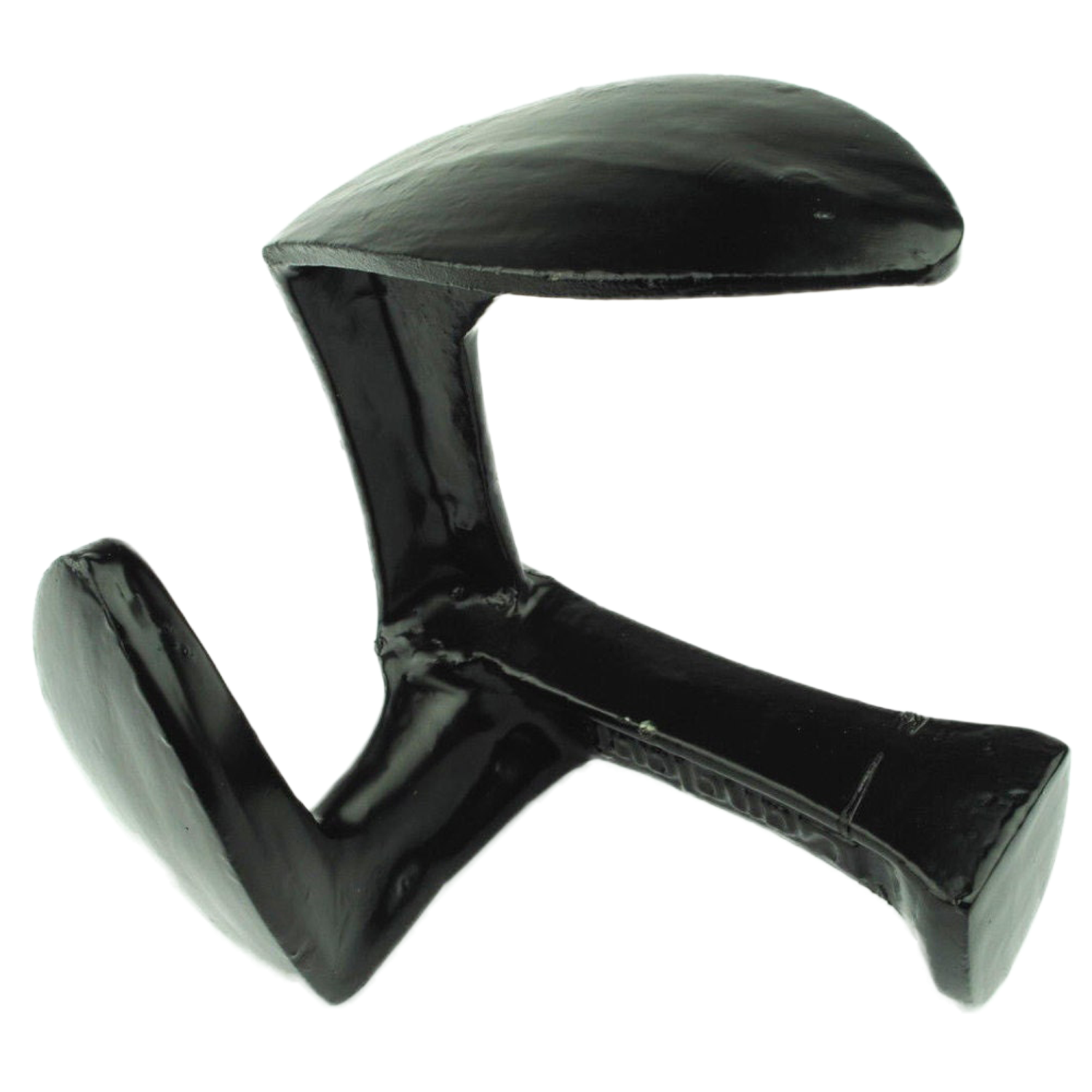 Image 1 of 7
Image 1 of 7

 Image 2 of 7
Image 2 of 7

 Image 3 of 7
Image 3 of 7

 Image 4 of 7
Image 4 of 7

 Image 5 of 7
Image 5 of 7

 Image 6 of 7
Image 6 of 7

 Image 7 of 7
Image 7 of 7








Ulrich Daubeny: Two Tales of the Supernormal and the Inexplicable
Little is known of Ulric Daubeny (1888-1922) who published his single slim volume of ghost stories in 1919, The Elemental: Tales of the Supernatural and the Inexplicable (George Routledge & Sons). The stories are of especial interest to those who follow the development of the traditional English ghost story from the Victorian and Edwardian eras through the present day. Daubeny’s stories are well-wrought pieces that are interesting to read for their portrayal of period morays and architectural environments. The first edition barely exists anymore in physical form; there are only 4 institutional holdings worldwide and only 1 known copy, which is rebound, in a private collection. I saw one once in the regular stacks at a university library. If it is still there, it might be the only copy with the original illustrated wrappers intact. A friend and I tried to convince the director of that library to deaccession the book to us, so that we could insure its preservation, but he would not do so. Our pleas to have the book moved to their Special Collections department were also rebuffed. I enjoyed the book while I had the chance, but to read its brittle pages was to further destroy it. “The Sumach” is the only one of Daubeny’s stories to gain a significant readership, having been reprinted several times, most notably in Richard Dalby’s Dracula’s Brood (Crucible, 1987) and Cemetery Dance’s The Century’s Best Horror Fiction (2012). A full-volume reprint of the collection done in 2006 by the now defunct Ash-Tree Press has somehow come to be almost unattainable as well. The fictional work of Daubeny is difficult for readers to find.
Fewer than 65 copies are here printed from hand-set Perpetua types on dampened Velata Wove and Japanese handmade Iyo glazed papers. 5 copies on handmade paper are bound in Bridget O’Malley’s Walnut Krinkle flax covers and contained in a drop spine box, covered also in the Walnut Krinkle as well as marbled papers by G. wineman from a decades old reserve. 27 copies on Velatya Wove are sewn by long-stitch into University of Iowa Center for the Book pc4 flax papercase wrappers with a foredge enclosure secured by a coconut shell button engraved with the Sutton Hoo Press stag as a nod to the beginnings of the press. 17 copies on Velata Wove are wrapped in vellum. Each of the Velata Wove copies are shipped in a hard, protective polystyrene box suitable for storage.
Two Tales measures just under 5” x7” and contains 24 printed folios, or 48 pages.
Little is known of Ulric Daubeny (1888-1922) who published his single slim volume of ghost stories in 1919, The Elemental: Tales of the Supernatural and the Inexplicable (George Routledge & Sons). The stories are of especial interest to those who follow the development of the traditional English ghost story from the Victorian and Edwardian eras through the present day. Daubeny’s stories are well-wrought pieces that are interesting to read for their portrayal of period morays and architectural environments. The first edition barely exists anymore in physical form; there are only 4 institutional holdings worldwide and only 1 known copy, which is rebound, in a private collection. I saw one once in the regular stacks at a university library. If it is still there, it might be the only copy with the original illustrated wrappers intact. A friend and I tried to convince the director of that library to deaccession the book to us, so that we could insure its preservation, but he would not do so. Our pleas to have the book moved to their Special Collections department were also rebuffed. I enjoyed the book while I had the chance, but to read its brittle pages was to further destroy it. “The Sumach” is the only one of Daubeny’s stories to gain a significant readership, having been reprinted several times, most notably in Richard Dalby’s Dracula’s Brood (Crucible, 1987) and Cemetery Dance’s The Century’s Best Horror Fiction (2012). A full-volume reprint of the collection done in 2006 by the now defunct Ash-Tree Press has somehow come to be almost unattainable as well. The fictional work of Daubeny is difficult for readers to find.
Fewer than 65 copies are here printed from hand-set Perpetua types on dampened Velata Wove and Japanese handmade Iyo glazed papers. 5 copies on handmade paper are bound in Bridget O’Malley’s Walnut Krinkle flax covers and contained in a drop spine box, covered also in the Walnut Krinkle as well as marbled papers by G. wineman from a decades old reserve. 27 copies on Velatya Wove are sewn by long-stitch into University of Iowa Center for the Book pc4 flax papercase wrappers with a foredge enclosure secured by a coconut shell button engraved with the Sutton Hoo Press stag as a nod to the beginnings of the press. 17 copies on Velata Wove are wrapped in vellum. Each of the Velata Wove copies are shipped in a hard, protective polystyrene box suitable for storage.
Two Tales measures just under 5” x7” and contains 24 printed folios, or 48 pages.
Little is known of Ulric Daubeny (1888-1922) who published his single slim volume of ghost stories in 1919, The Elemental: Tales of the Supernatural and the Inexplicable (George Routledge & Sons). The stories are of especial interest to those who follow the development of the traditional English ghost story from the Victorian and Edwardian eras through the present day. Daubeny’s stories are well-wrought pieces that are interesting to read for their portrayal of period morays and architectural environments. The first edition barely exists anymore in physical form; there are only 4 institutional holdings worldwide and only 1 known copy, which is rebound, in a private collection. I saw one once in the regular stacks at a university library. If it is still there, it might be the only copy with the original illustrated wrappers intact. A friend and I tried to convince the director of that library to deaccession the book to us, so that we could insure its preservation, but he would not do so. Our pleas to have the book moved to their Special Collections department were also rebuffed. I enjoyed the book while I had the chance, but to read its brittle pages was to further destroy it. “The Sumach” is the only one of Daubeny’s stories to gain a significant readership, having been reprinted several times, most notably in Richard Dalby’s Dracula’s Brood (Crucible, 1987) and Cemetery Dance’s The Century’s Best Horror Fiction (2012). A full-volume reprint of the collection done in 2006 by the now defunct Ash-Tree Press has somehow come to be almost unattainable as well. The fictional work of Daubeny is difficult for readers to find.
Fewer than 65 copies are here printed from hand-set Perpetua types on dampened Velata Wove and Japanese handmade Iyo glazed papers. 5 copies on handmade paper are bound in Bridget O’Malley’s Walnut Krinkle flax covers and contained in a drop spine box, covered also in the Walnut Krinkle as well as marbled papers by G. wineman from a decades old reserve. 27 copies on Velatya Wove are sewn by long-stitch into University of Iowa Center for the Book pc4 flax papercase wrappers with a foredge enclosure secured by a coconut shell button engraved with the Sutton Hoo Press stag as a nod to the beginnings of the press. 17 copies on Velata Wove are wrapped in vellum. Each of the Velata Wove copies are shipped in a hard, protective polystyrene box suitable for storage.
Two Tales measures just under 5” x7” and contains 24 printed folios, or 48 pages.
